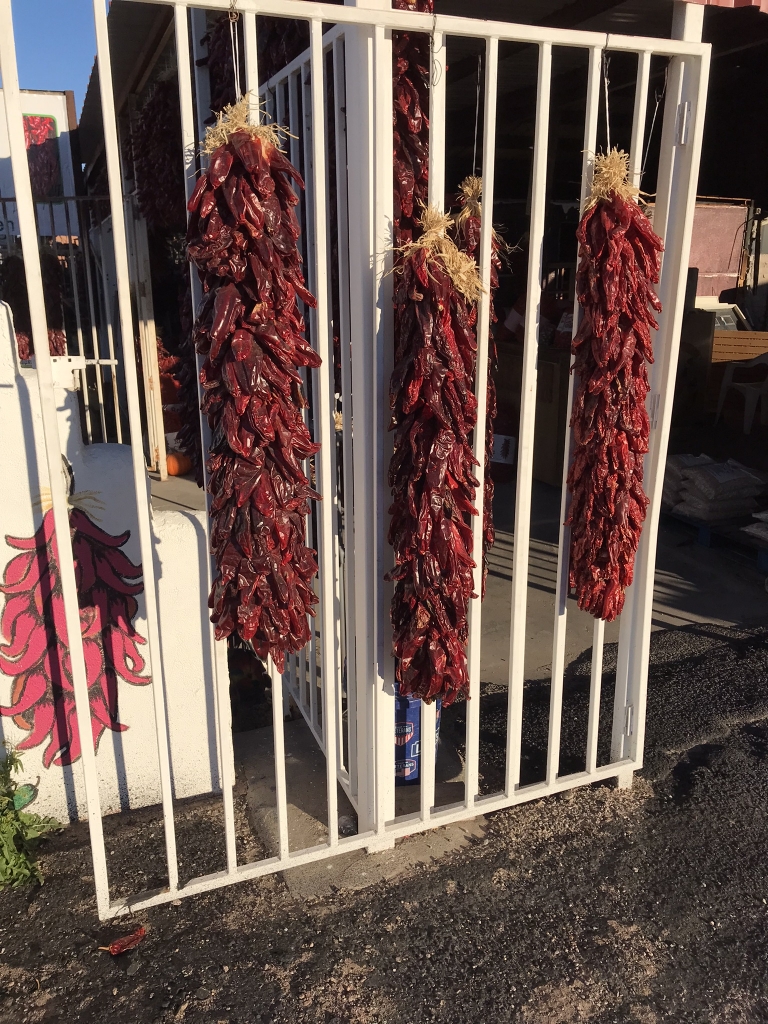Gem & Jam happens every February in a fairground on the southern edge of Tucson, Arizona. It's meant to coincide with the annual Tucson Gem Show, which I have to admit I only found out about after I learned about the music festival. I had a friend in Arizona who invited me to check this one out, and since I didn't have anything else going on I took a couple days off from work for the long drive and bought my ticket.
Getting There
Even though this was happening in a state bordering the one I lived in, the trip to the festival would be long, because states in the western US are quite big. Since Arizona borders New Mexico to the west, and Clovis is right next to New Mexico's eastern border with Texas, this was going to be a long drive. It also didn't help that the Clovis/Portales area got a huge amount of snowfall in the morning of February 3, the day I was supposed to leave. Thankfully the temperature warmed up considerably after noon, melting all the ice on the roads, so I could safely start my journey.
After about two hours I made it to Roswell where I had to stop for gas. Every one of us has heard of Roswell, New Mexico for one reason and one reason only. The people who live there know this and have seriously leaned into it.
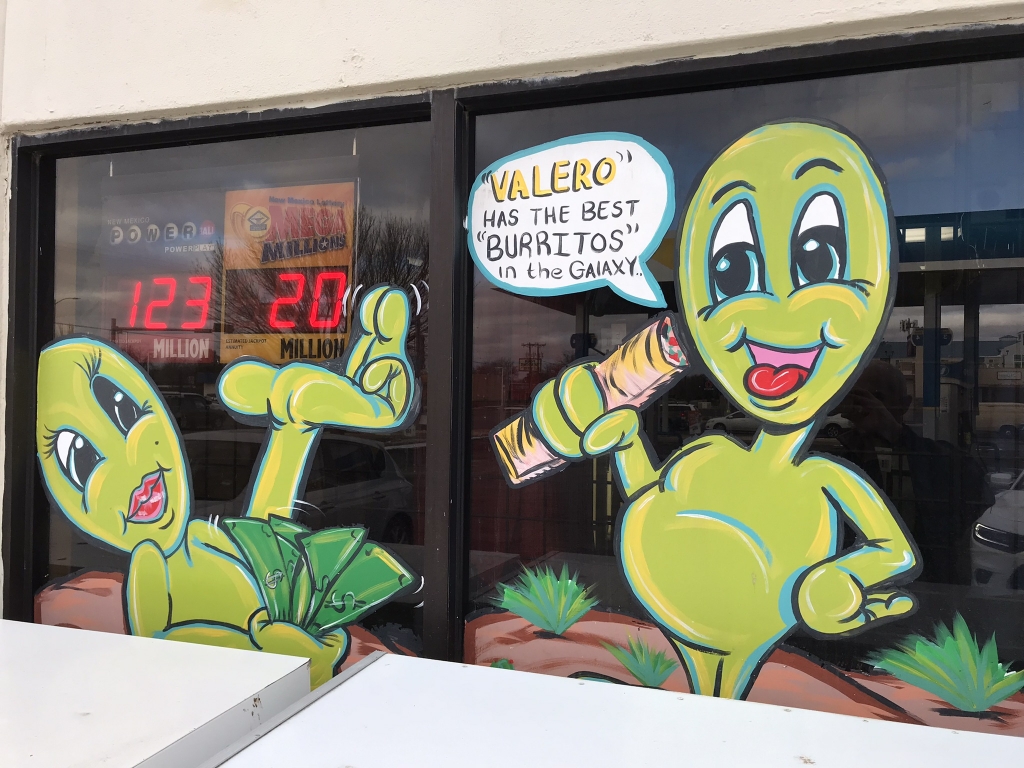
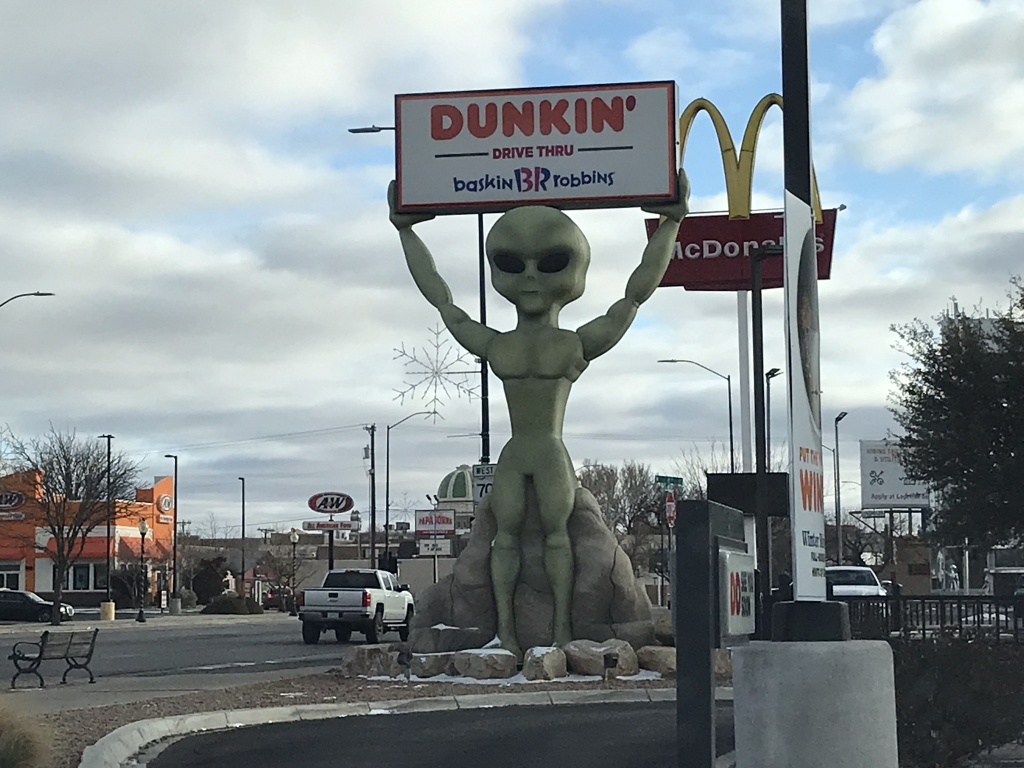
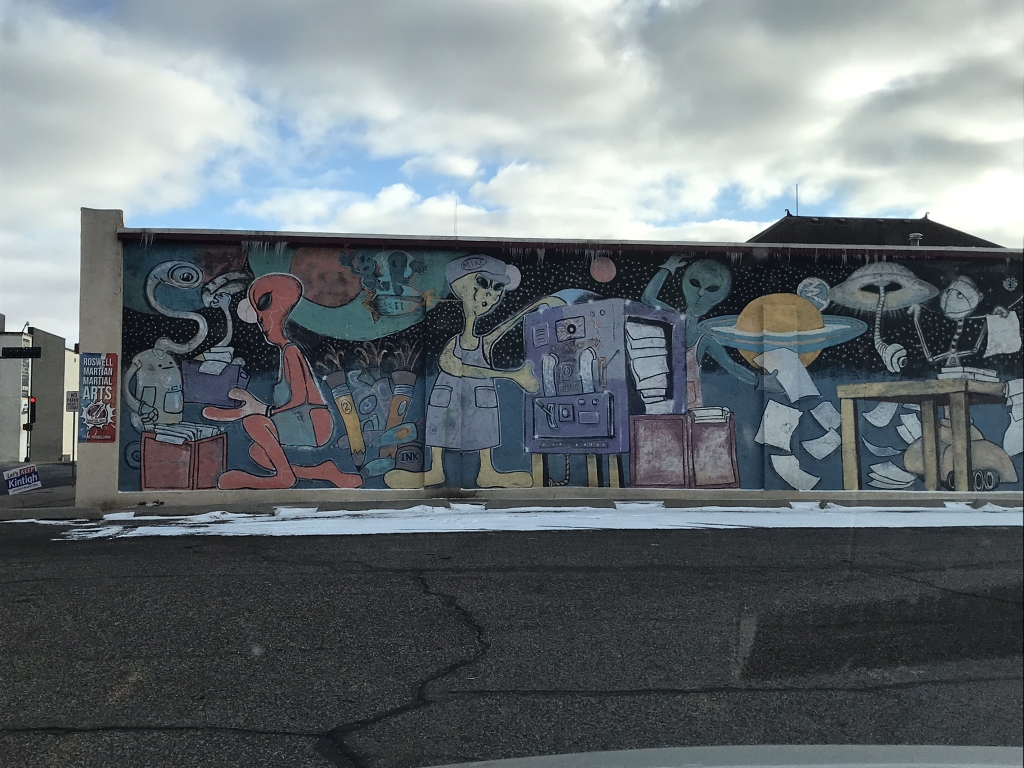
I passed through the touristy town of Ruidoso as the sun was setting. Then after dark I ate dinner at a Subway in Alamogordo, zipped past Holloman Air Force Base and the White Sands Missile Range, and around that time something on the other side of the road, to my left, caught my eye. It was a Border Patrol checkpoint.
All along the southern edges of Texas, New Mexico, Arizona, and California are Border Patrol checkpoints on northbound highways. These effectively make the areas on the border with Mexico into what I call the border zone that you can freely enter, but can't leave without having to stop and possibly answer questions about where you're going and why, and maybe even get your car searched if you seem suspicious enough. Apparently Las Cruces, where I was staying the night, is within the border zone, but Tucson isn't, meaning the next day I'd be driving through another checkpoint.
I spent Thursday night in Las Cruces, which is actually New Mexico's second most populous city, with Albuquerque being number one. It doesn't really look or feel like a city so much as a really big suburb, though. Before leaving on Friday morning, I even stopped at a local pool to do some laps, because of course I'm going to keep my fitness goals up while on vacation.
After checking out of the hotel I got back in the car and started the second part of this long road trip on Interstate 10, one of the US's great coast-to-coast highways. Pretty soon I was lined up at the Border Patrol checkpoint, but this didn't take long at all. Next thing I knew I was back on the Interstate, and there really isn't much to see between Las Cruces and Tucson, long as the distance is. Some time later after the checkpoint, probably another hour or two, I stopped for lunch at a Denny's in Deming, New Mexico, and it was probably just as long after that when I made a gas stop in San Simon, Arizona, just past the state line. And San Simon wasn't exactly close to Tucson...
Well to make a long story short, I spent hours that day driving through the desert of New Mexico and Arizona, and didn't see much besides countless enormous billboards for tourist traps. After one last stop at a Wal-Mart I finally reached my destination, the Pima County Fairgrounds.
The Venue
The Pima County Fairgrounds were probably the smallest festival grounds I've ever seen used for a weekend event like this with camping. In fact, comparing the festival map to the Google Maps satellite map of the fairgrounds, the festival barely took up half of the space. There were five stages in this festival, an art gallery, a row of food stands, camping areas including car and RV camping, and on the map they looked packed together in a crowded space, but that's not at all what it felt like.
The Stages
The five stages were named after gems: Emerald, Onyx, Quartz, Opal, and Amethyst. Emerald was the biggest one where the biggest names were playing. Onyx was the only indoor stage, inside a huge metal structure that resembled a warehouse. The other three all adjoined each other and Onyx; Quartz and Opal were smaller stages hosting lesser-known artists, while Amethyst was mostly used for events like ecstatic dance.
The Camping Areas
Just like any other camping festival, there was GA camping, car camping, and RV camping. As with the stages, it was a smaller area than at other festivals but still fit quite a lot of people in that space. I'd only paid for GA camping, so I had to leave my car in a parking lot outside the camping areas, but I had friends in the car camping area who let me set up my tent next to them.
Naturally there were a few people in camping who brought their DJ equipment and played renegade sets; here I didn't spend nearly as much time there as I had at most other festivals that year.
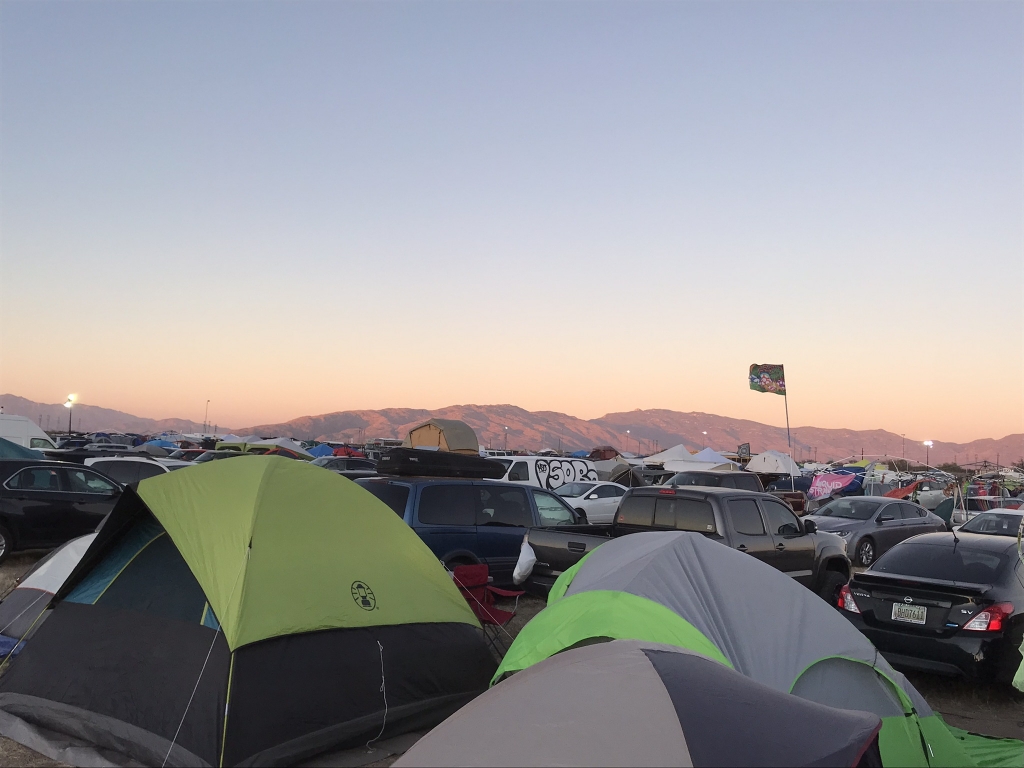
The Music
The array of genres here was certainly diverse, not as much as Hulaween, but definitely close. The lineup covered a lot of ground from jam bands to Appalachian to various points on the electronic spectrum.
Friday
The first artist I saw in the festival was Rising Appalachia, at Emerald, the big stage. This isn't the sort of thing I usually listen to but I'd been getting to like it more and more recently, especially when listening to this festival's artists in the preceding months.
Lab Group followed Rising Appalachia at Emerald. Also new musical territory for me, but that's why I go to festivals like this. Lab Group is an experimental bass duo, formerly a trio which included the late CharlestheFirst, who was scheduled to play this stage at this time. After CharlestheFirst's unexpected death last December, Lab Group took over for all his scheduled sets this year, including this one and at Electric Forest in June.
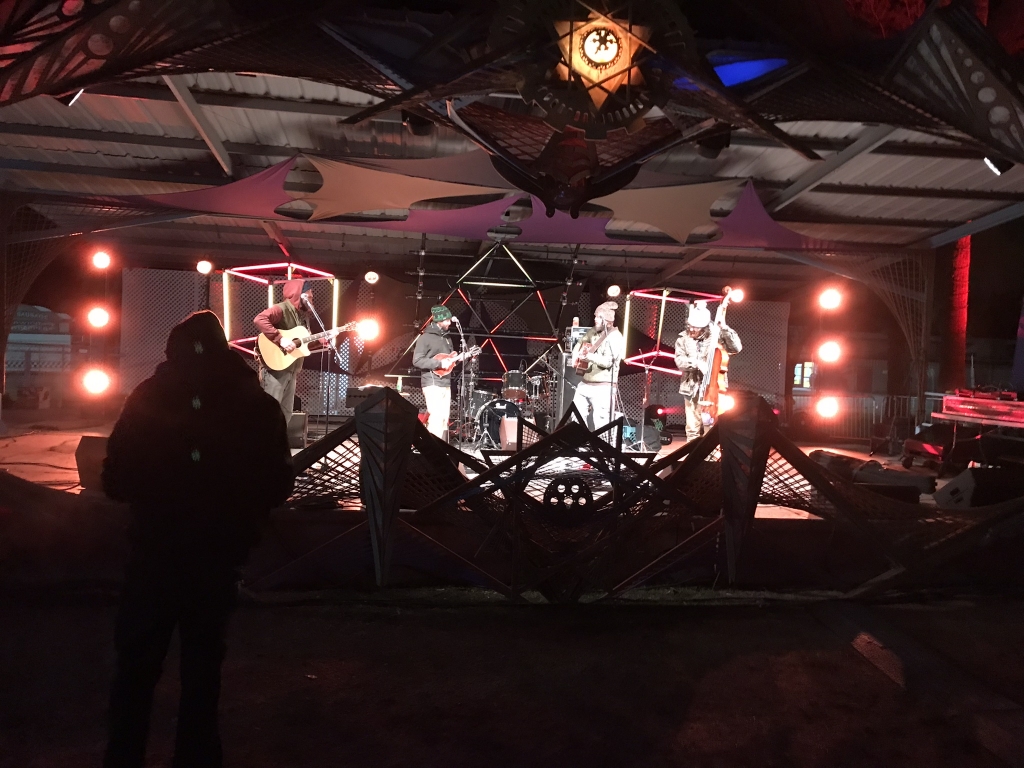
Band of Comerados serving up some more twangy bluegrass at the Quartz stage.
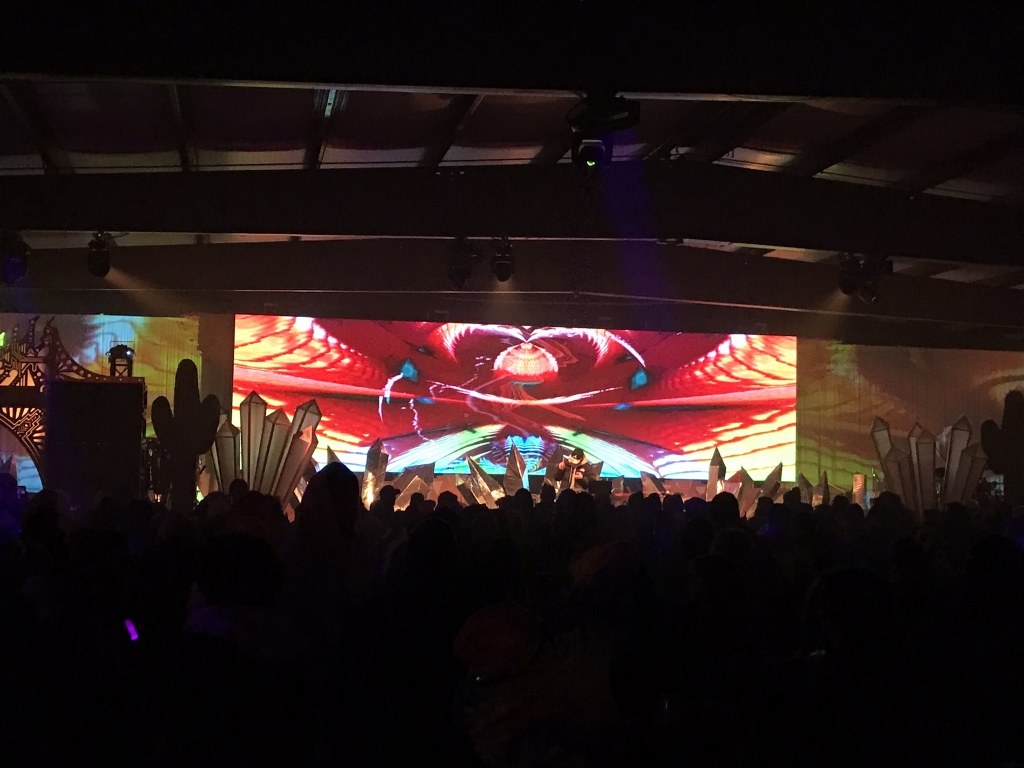
Here's Daily Bread who I first saw at Hulaween. Still can't think of a genre label that fits.
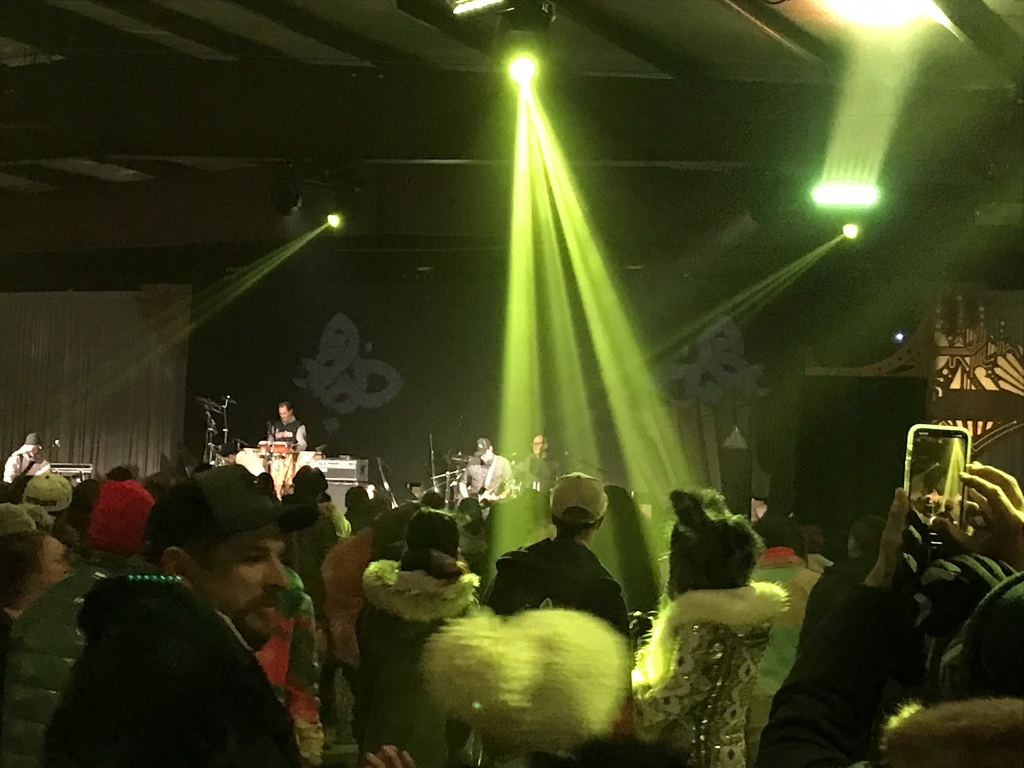
Finally, the last set I took in on Friday night was Lotus, an electronic jam band, on the indoor Onyx stage.
Saturday

I've wanted to see Capyac for years. They were at Euphoria one of the years I was there, but I totally missed them. They were at ACL in 2017, but I couldn't get to the venue on time for their set then. I've always found it tough to describe them. It's a band, with electronic sounds, that you can dance to, but they don't sound anything like EDM...the First Avenue website describes them as "a surrealist dance band with as much Berlin/Detroit/French electronic influences as jazz, funk, and the swirl of modern genres mixed in." That sounds pretty accurate so I'll go with that.
Next at Quartz was Moontricks, who I'd wanted to see since I'd discovered them a year earlier. They sound both Appalachian--though they're from western Canada--and electronic. Their website has the description "bootstomping bass" and I think that fits well.
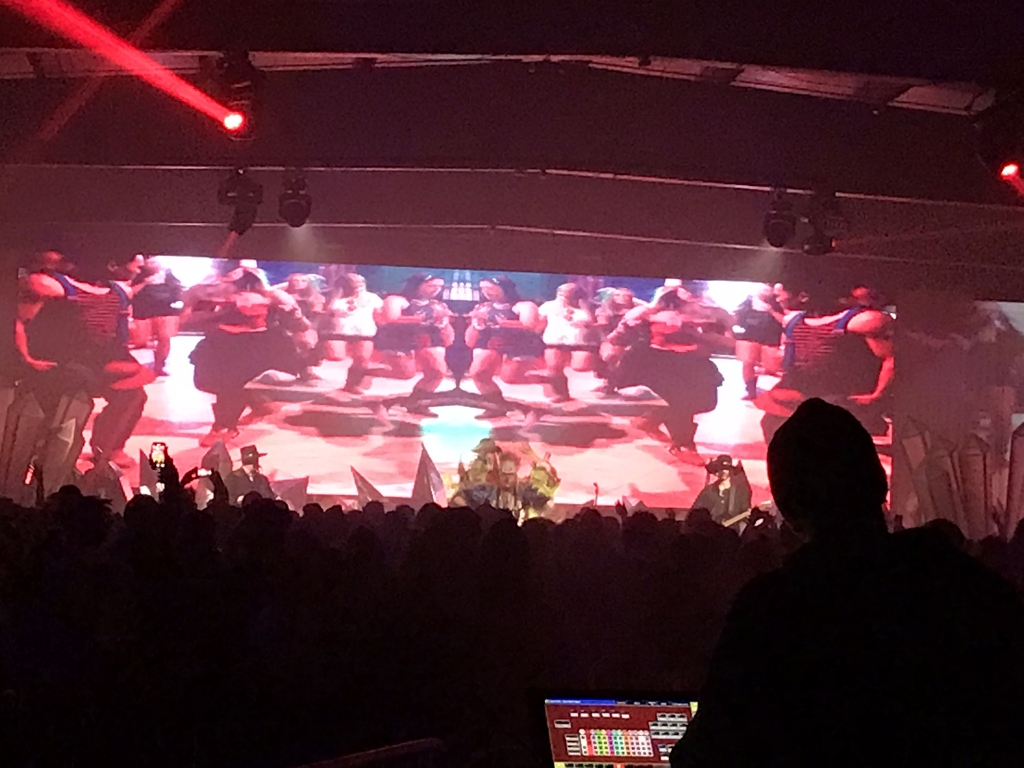
I'd seen a bit of Dirtwire at Lightning in a Bottle four years earlier, and had to take in a whole set here. With the twangy guitar and fiddle they sound rather bluegrass-ish, but definitely reach beyond that. Wikipedia describes them as "swamptronic experimental music." Now there's a word I've never heard before. Seen here in this blurry photo, out in front with the colorful costume, is Larry Yazzie of the Meskwaki Nation, a.k.a. Sac and Fox Tribe, in Iowa; he opened and closed the set with an ancient ritual dance.
After Dirtwire I rejoined my friends over at Emerald for Shpongle, who was listed in the schedule as "Shpongle (Simon Posford DJ set)." I'd never heard of Shpongle or Simon Posford before. It turns out Shpongle was a psy-trance duo from England, consisting of Hallucinogen and Raja Ram, who have been around for over two decades and stopped playing live shows in 2019. Even so, it seems that Hallucinogen, a.k.a. Simon Posford, has been playing some DJ sets at festivals under the Shpongle name. I've heard psy-trance before, but this sounded a bit different with its deep bass and often slow tempo, occasionally touching on various other genres. The visuals accompanying the music were the most trippy I'd ever seen.
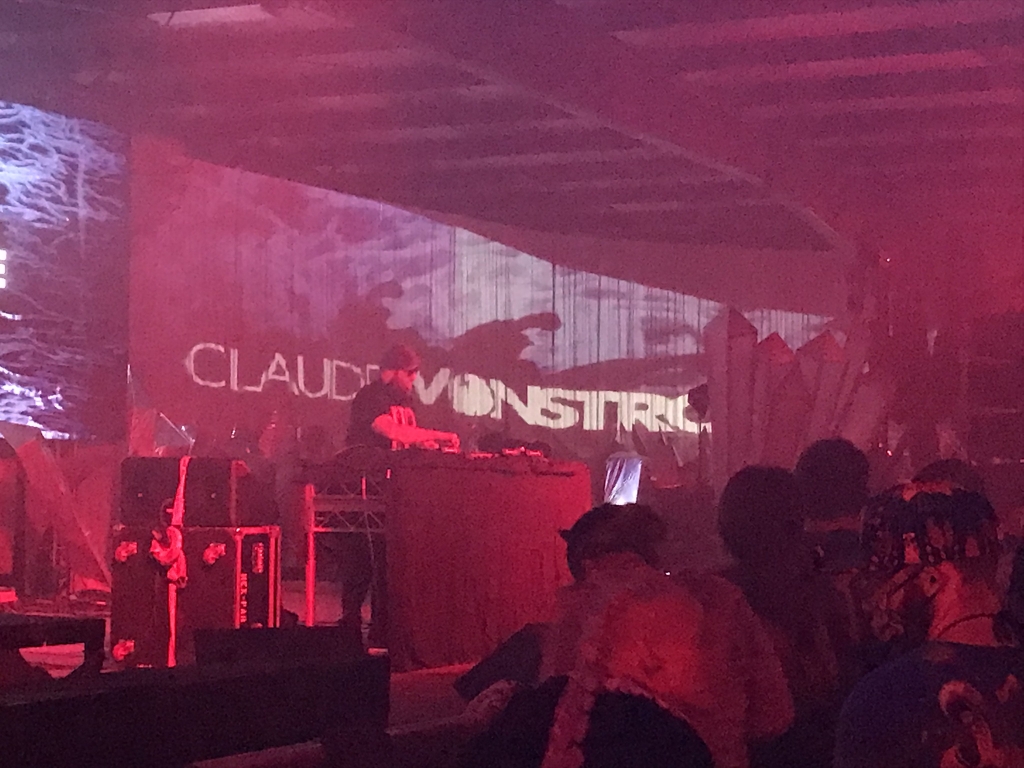
Here's Claude VonStroke playing a two-hour set at Onyx. I'd really enjoyed his set at Hulaween a little more than three months earlier, so I couldn't miss this one.
Immediately after Claude at Onyx, JackLNDN delivered another great pumping house set.
Sunday
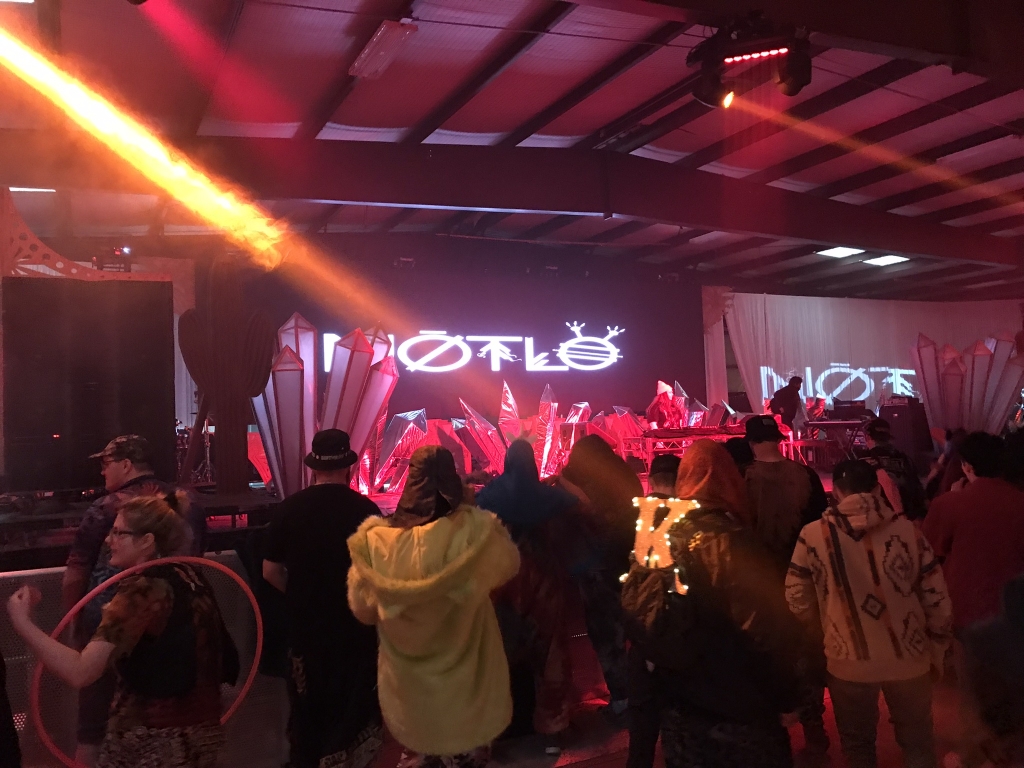
Notlö bringing some bass to Onyx.
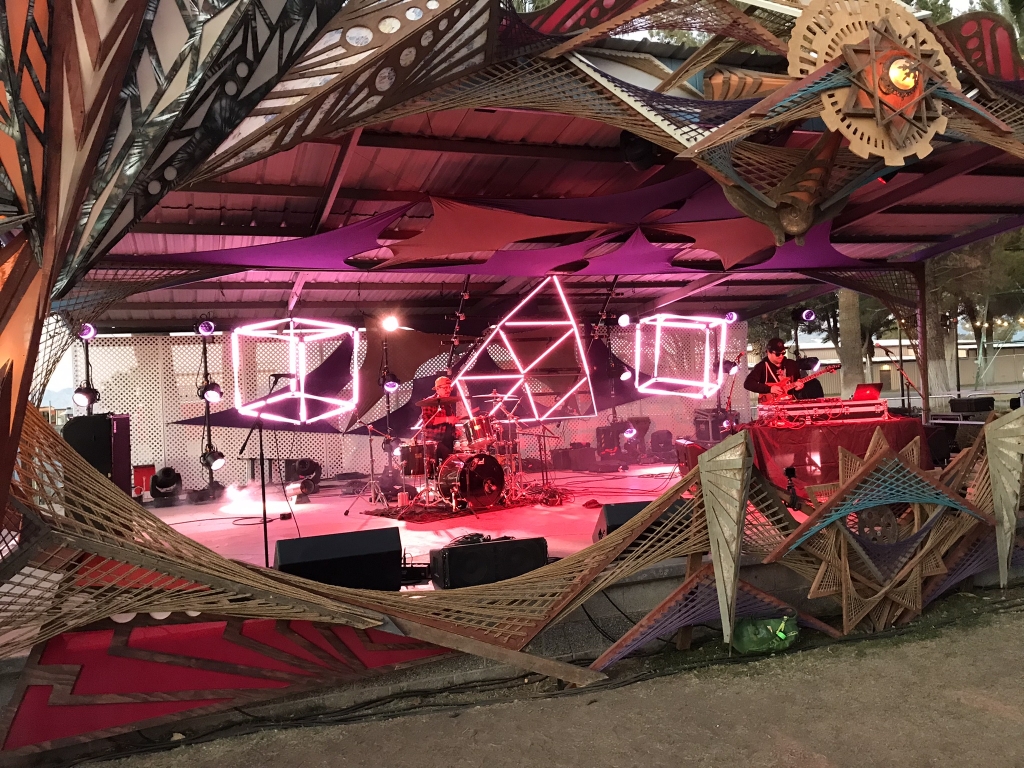
Multi-genral multi-instrumentalist Vincent Antone (on the right) played some funky beats combining samples and turntablism with live guitar and drums, along with sideman Jose Gutierrez on drums. Also, during the show before this one at this stage, I got to meet one of these guys when he recognized my ACL shirt!
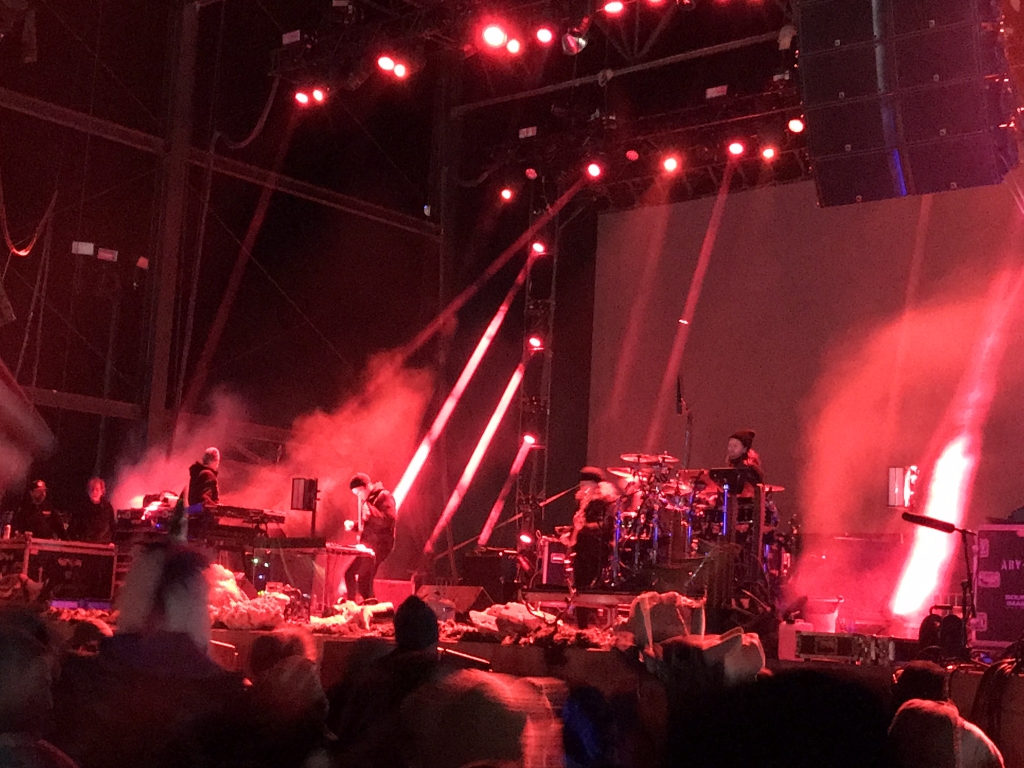
Finally, here's the Sunday night headliner, STS9. They're an electronic-leaning jam band who I'd heard a lot about, but never seen any of their live shows until now. They played at Euphoria every year it happened, but I never saw them once there, and had to make up for it here.
Naturally there were more artists who I missed out on. Liquid Stranger was there Friday night who I wasn't interested in seeing then, but listened to more in later months. Also I probably would have enjoyed Veil, Quantic, Atyya, and Equanimous, judging by some clips of their sets I've seen on YouTube. Finally, I can't believe I missed SunSquabi.
The Food Scene
The food court had all the delicious options I expected. My favorite was probably Kaliko's Hawaiian Kitchen, which served up stuff like poké bowls. My other go-tos were Funky Pita which served gyros and falafel, and Big Phan which specialized in "Asian street food" like dumplings and Banh Mi. Additionally, outside the festival gates, there was Roots Gaia Vegan which was where I and many other campers went to get coffee in the mornings.
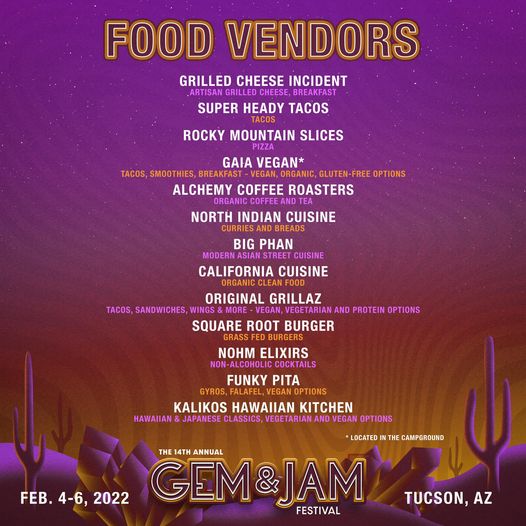
There was another vendor, Nohm Collective, which had set up two "elixir bars," one by the food court and the other inside the building housing Onyx stage. They sold non-alcoholic cocktails, and the thing I kept coming back for, shots of "sipping cacao." These were small cups of hot drinking chocolate which were available in several varieties, such as mint dark, infused with peppermint, spicy dark, containing Cayenne pepper, and golden dark, which had a special blend of spices and orange peel.
The beer, I believe, was mostly Odell Brewing products from Fort Collins, Colorado. Pretty good selection. The many beer stands throughout the festival also sold shots of various liquors.
The Art
There was a large space near the Emerald stage where there were artists selling their paintings, and painting new ones right there.
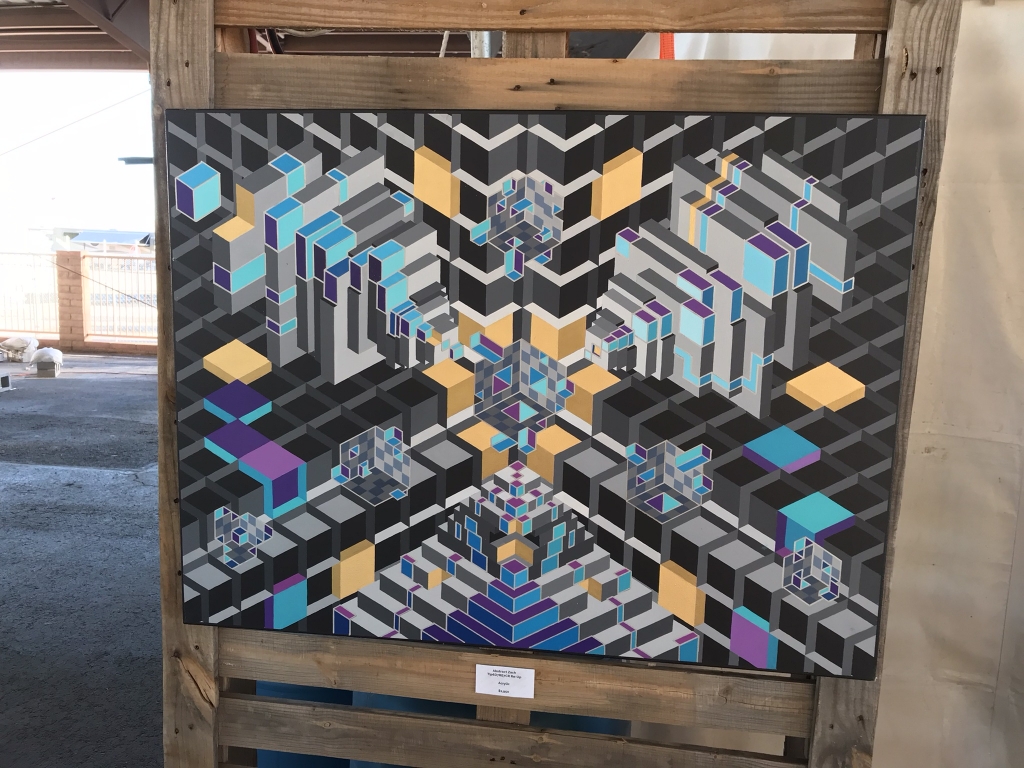
I really like these kinds of paintings with these complex geometric patterns. Maybe I should buy one. Well not this one, but maybe another which doesn't have a price in the four figures.
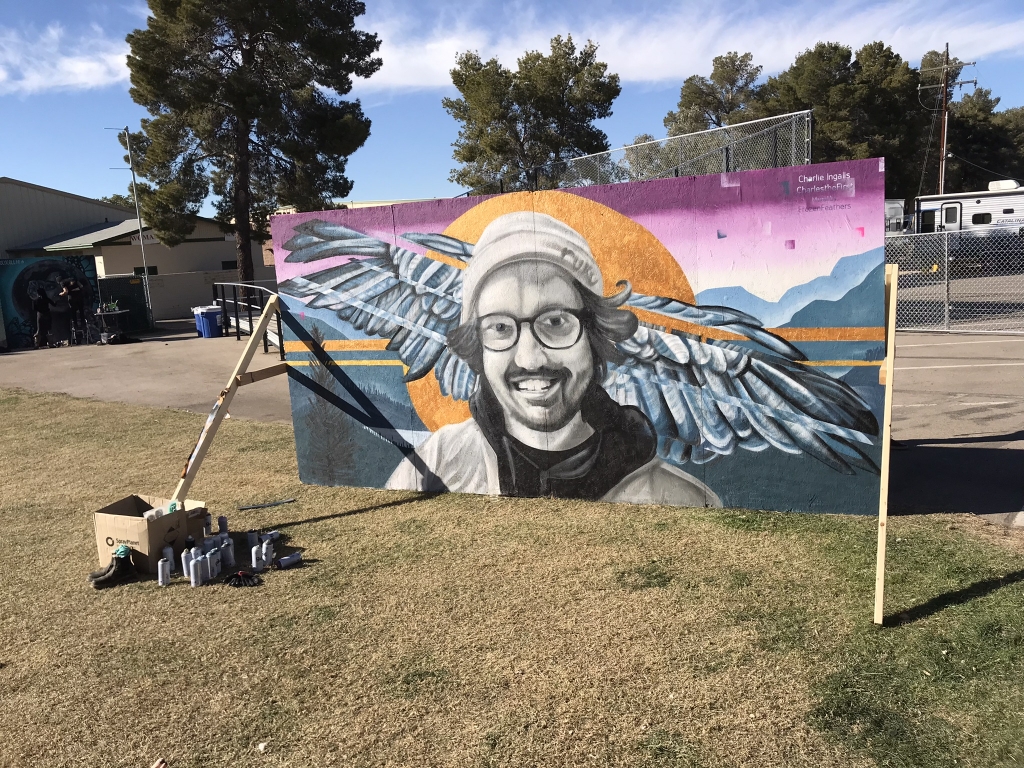
Tribute to CharlestheFirst
There were other interesting pieces of art scattered around. Some of them were sculptures, but the most memorable was this light cube. This device was set up in the back of the big warehouse in which was also the Onyx stage.
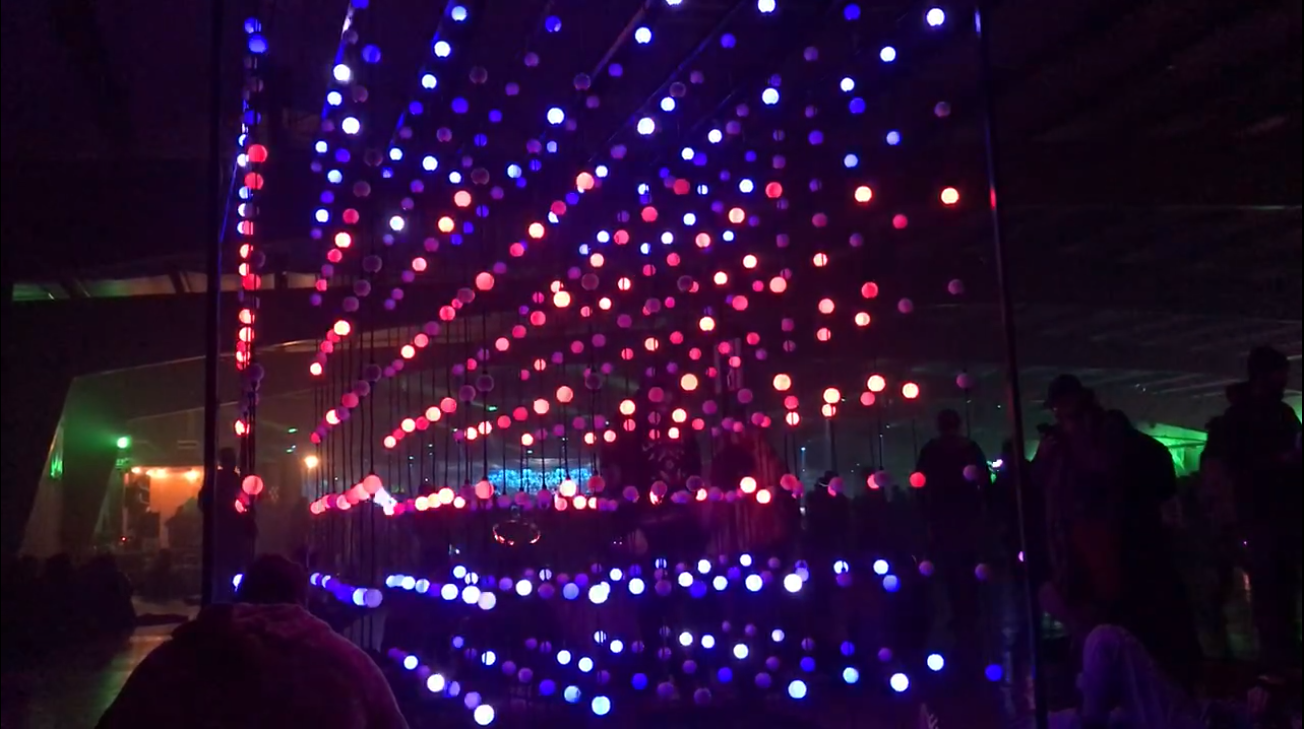
This cube full of light bulbs is something that you just have to see in person. The artist who put this here could program it to flash its lights in various patterns in various colors. It also appeared at Sonic Bloom in Colorado four months later.
The Weather and the Local Environment
This was my first experience of this part of the country at this time of year, southern Arizona in the middle of winter. During the daytime, it was actually rather pleasant with the sun out and temperatures feeling not unlike springtime in places further north. But then after sunset, it got cold, almost freezing. So on Saturday and Sunday, when the festival opened up, I would go in wearing a short-sleeved shirt but with a sweater tied around my waist, which I would put on after the sun went down.
And I can't forget the wind. For all of Friday and half of Saturday, there was a constant strong wind, always in the same direction, always the same strength. Winds like this must be endemic to the desert climate. Friday afternoon, I had to set up my tent with this wind trying to pull it out of my hands. Reviews I've read later say that the wind even delayed the festival opening! It was ever-present during all of Friday night's musical experiences, during which time I was glad I was wearing a sweater because not only was it windy, but cold too. The wind finally let up around noon on Saturday, which made the atmosphere much more pleasant for the rest of that day and all of Sunday. Then on Monday morning, it returned just in time for me to start taking my tent apart!
All over the ground were scattered these irritating little thorny burs, also known as stickers, which are also a plague in eastern New Mexico. Some of them punctured my air mattress as I pumped it up Friday night, without my noticing, so every night I'd go to sleep on a newly-pumped mattress and wake up the next morning on a flattened one. At home I've been able to locate and patch up some of the holes, but there's at least one I can't find, which is why I had to bring another mattress to Sonic Bloom and Electric Forest four months later.
Going Home
The festival may have been over, but this trip wasn't. To return home, I plotted an alternate route, bypassing Las Cruces and the border zone, which, late in the afternoon, would take me through a New Mexico town that I don't know if I'd ever have the chance to visit again. Ever heard of Hatch chile peppers? They're a staple of New Mexico cooking. Go into any grocery store anywhere in the state and you'll have no trouble finding the chiles, as well as jars of salsa made with them. They come in two varieties, red and green, and they're such an institution that New Mexico actually has an official State Question, alongside the State Flower, State Bird, State Song, and other such symbols: "red or green?"
Hatch chile peppers are so named because they're only grown near an otherwise-insignificant small town on the Rio Grande called Hatch. This is where my route home would be taking me. You can find Hatch chile salsa in any store in the state, and while they are made with real Hatch chiles, most of these salsas are made by companies in cities like Albuquerque and Santa Fe. Now, I had a rare opportunity to get some real Hatch chile salsa right from the source. There's plenty of places in this village to buy peppers and salsa, and I stopped at two of them: Hatch Chile Sales, where I got a bag of garlic seasoning in addition to salsa, and Val Verde. Now that I've eaten red, green, and "Christmas" (mixed red and green) salsa, I have to say I like the green better.
And don't forget, it is spelled chile.
